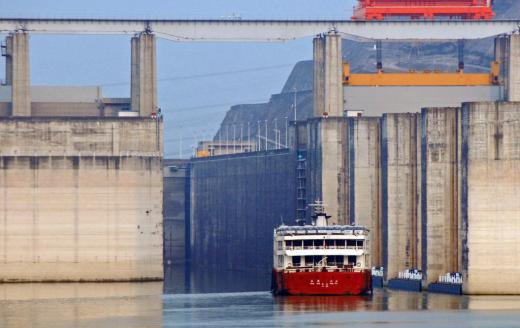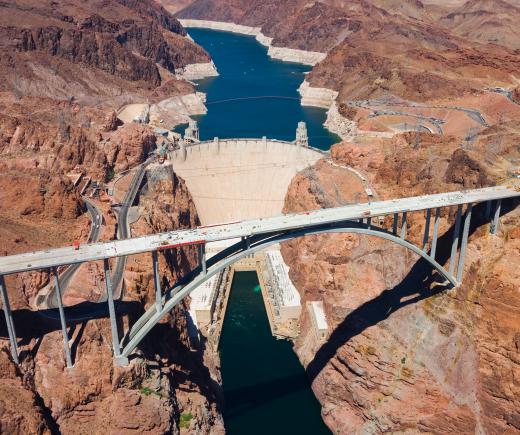What is River Engineering?
 Mary McMahon
Mary McMahon
River engineering is a practice in which a river is modified with the goal of creating a change, which can vary from protecting wetlands to providing navigable water for boats. People from a number of different disciplines including civil engineering, hydrology, geology, and ecology can be involved in a river engineering project. Due to environmental concerns, many nations have strict rules in place about the steps which must be followed when preparing for a river engineering project, with the goal of protecting the environment and safeguarding water resources.
Humans have been interfering with rivers for various reasons for a very long time. Many early human cultures engaged in practices like diversion for safety and irritation, as well as modifications to make rivers easier and safer to navigate. Numerous tools can be used in river engineering, ranging from dams to canals, and many of these techniques are ancient in form, even if they have changed a bit since they were first developed.

The first step in river engineering is to identify why a river needs to be engineered. For example, engineers may be called in to divert a river so that seasonal flooding becomes less dangerous for people who live in the area. River engineering can also be used for agriculture and navigation. Researchers may also be involved in river engineering which is designed to address environmental problems, which in some cases involves reversing engineering performed previously to restore natural habitat.

With a goal in mind, the crew evaluates the river to devise a plan which they believe will achieve that goal. The crew must think about factors like seasonal weather patterns, the current track of the river, materials present in the riverbed, the geology of the surrounding region, how neighboring human communities will be affected, and what the impact of river engineering might on the ecology of the area. For example, diversion might threaten an animal population, or the use of locks for navigation might pose a problem to fish which need to be able to move freely along the river.
Using the issues identified during the site evaluation, an engineering proposal can be put forward. The proposal usually needs to be backed with documentation which demonstrates that the crew has fully considered the impact of the project, including models demonstrating various scenarios which might happen as a result of river engineering. If approved by regulatory agencies, the project can begin, with the crew engaging in activities like straightening the river, dredging the bed to make it deeper, or diverting water around a community.
AS FEATURED ON:
AS FEATURED ON:












Discuss this Article
Post your comments